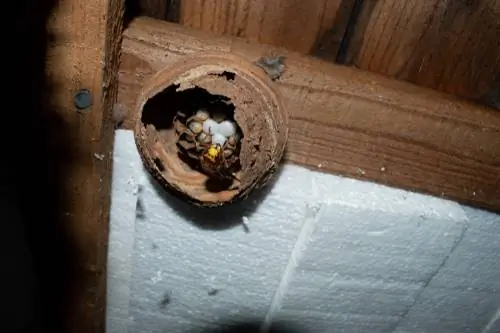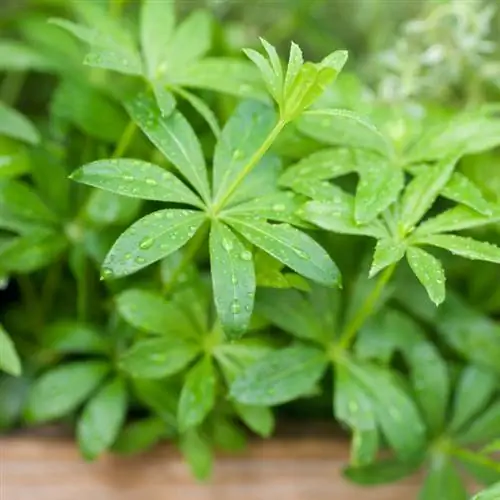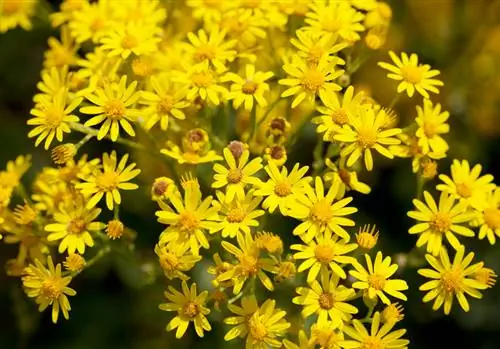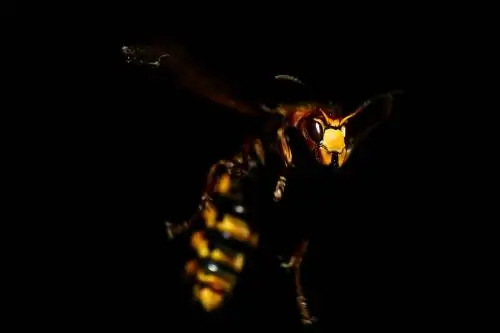- Author admin [email protected].
- Public 2023-12-16 16:46.
- Last modified 2025-06-01 06:02.
Hornets are the largest colony-forming insects in Europe. At the head of this state is the Hornet Queen, without whom the people would not be able to survive. Queens can only be observed at certain times of the year and spend most of the warm months in the nest. You can recognize them using various characteristics.
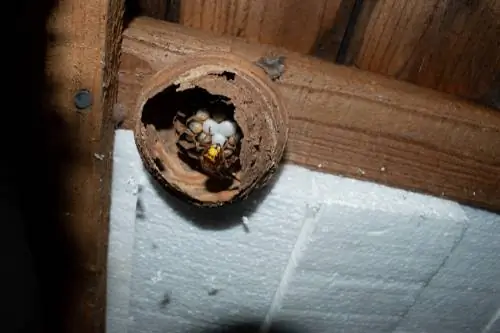
How do I recognize a hornet queen and when is she active?
The queen hornet is 23 to 35 millimeters tall and has reddish-brown spots on her abdomen, which is larger than her workers. She builds the nest in spring and lays eggs. The queen can only be seen outdoors in spring and autumn and, like her workers, can sting several times.
How to recognize the queen hornet - size and other characteristics
The appearance of the hornet queen differs significantly from that of the worker or the drone. The genders can be distinguished from each other using the characteristic features in the following table:
| Hornet Queen | worker | Drone | |
|---|---|---|---|
| Size | 23 to 35 millimeters | 18 to 25 millimeters | 21 to 28 millimeters |
| Wingspan | 44 to 48 millimeters | 33 to 45 millimeters | quite long in relation to body size, good flyer |
| Weight | 0.5 to 1.1 gram, depending on the season | 0.5 to 0.6 grams | 0.6 to 0.7 grams |
| Coloring | like worker, can be distinguished by reddish-brown spots on the abdomen | black with red-brown markings and yellow abdomen | darker than the worker |
| Sting | about 4 millimeters | 3.4 to 3.7 millimeters | no sting |
| Life expectancy | 1 year | three to four weeks | one to four weeks |
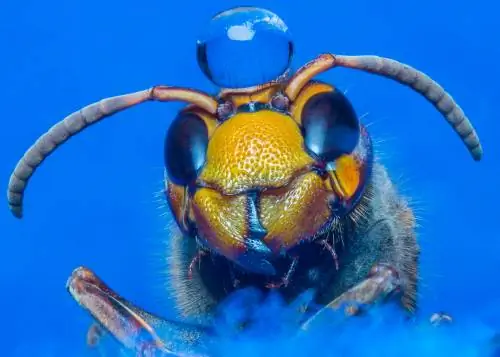
A well-fed hornet queen can grow to almost 4cm tall
It is striking that the hornet queen differs from her people primarily in terms of their size. The wide range in size development is due to the availability of food in autumn and spring: the more food the queen finds during this time, the larger she becomes. Their weight also fluctuates significantly depending on the season: If a well-fed hornet queen starts the season with a body weight of around one gram, she quickly loses weight due to the effort of laying her eggs and practically halves her weight by autumn.
Excursus
The largest hornet in the world lives in Japan
Even if our native hornet queen may seem huge to you, the Asian giant hornet, which is primarily native to Japan, is even larger. With a body length of up to 55 millimeters, the species is considered the largest hornet species in the world and is approximately five times larger than the honey bee.
When does the hornet queen fly?
Only for a very short time each year you have the opportunity to observe a queen hornet outdoors. The animals spend most of the year in the nest or in their winter quarters. Between April and mid-May - earlier or later depending on the weather - the hornet queen leaves her winter quarters and begins building her nest within a short period of time.
As soon as the first workers have hatched, they take over the foraging and brood care, so that the queen remains in the nest as head of state and is exclusively occupied with laying eggs. Hornet queens are not seen during the summer months. It is not until September that the young queens fly out, mate and then look for suitable winter quarters.

Nest building
After leaving her winter quarters, the hornet queen immediately looks for a suitable place for her future nest. This is often created close to last year's nest, but old nests are not reoccupied. So if you had a hornet's nest in your garden last year, keep an eye out for the hornet queen's activities the following spring. You can recognize this, for example, by the fact that the noticeably large hornet repeatedly flies to the same spot.
Once the queen has found a suitable spot, she builds the hornet's nest out of carefully chewed and salivated rotten wood. At the same time, an egg is laid in each completed honeycomb, from which the first larvae finally hatch. These are initially looked after by the queen, but after about four weeks the first finished workers take over the care of the other offspring as well as building the nest. From this point on, the hornet queen is only busy laying eggs and thus continuously provides offspring. The queen lays around 40 eggs per day.
Prevent nest building and drive away the hornet queen
If you discover a single hornet in the spring that is obviously busy building a nest, you can use gentle means to drive it away. This makes sense, for example, if the animal wants to place its home in the most inconvenient place - for example in a roller shutter box, under the canopy or near the terrace. Perfume the affected area with clove oil, a scent that hornets don't like, and seal the entry point with an impenetrable material. Densely meshed insect nets, for example, are very suitable for this, but also simply construction foam. Offer the hornet queen an alternative nesting option in a less dangerous location, such as a hornet box.
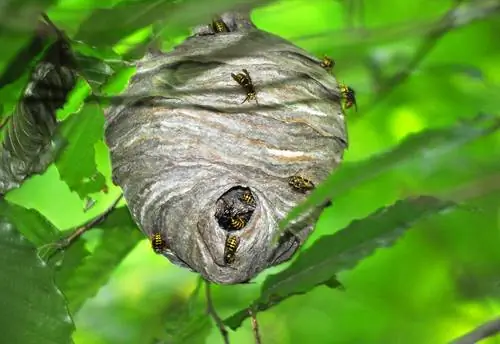
Despite their bad reputation, hornets are usually not dangerous
Excursus
Hornets are under nature protection
However, you are not allowed to capture or kill the hornet queen. Hornets - like all other wasp species - are protected by the Federal Nature Conservation Act, which is why catching and killing the animals can be punished with fines of up to EUR 50,000, depending on the federal state. For the same reason, you are not allowed to remove a hornet's nest that has already been built, but must obtain official permission to do so. If this is granted - which only happens in exceptional cases - commission a specialist to relocate you. This could be the fire department, a professional pest controller or even a beekeeper. You have to bear the costs yourself.
Can the Hornet Queen sting?
Since the stinger evolved from the ovipositor, only female animals have one. Both the queen and the workers can sting, but the male drones cannot. The hornet queen's stinger is slightly longer than that of her worker; after all, the parent mother is also about ten millimeters taller than the average subordinate. Unlike bees, hornets can sting multiple times. By the way, drones can't sting, but they act as if they were threatened.
How dangerous is a hornet sting?
“Seven stabs kill a horse, three kill a person and two kill a child.” (popular belief)
The “folk wisdom” mentioned above is an ancient misconception that probably comes from the ancient custom of using hornets as a weapon of war. At that time, the animals were locked in sealed clay jars and thrown over the walls of besieged cities. There the vessels shattered and the confused, frightened hornets stung around en masse in fright. In fact, the “venom” of the hornet is no more harmful than that of a wasp, in fact it is chemically very similar. Only those who are allergic to wasp venom have to be careful with hornets, as cross reactions often occur due to this similarity. However, a honey bee releases a significantly higher dose of “venom” in a single sting than a hornet, which is usually due to the sting remaining in the skin.
First aid after a hornet sting
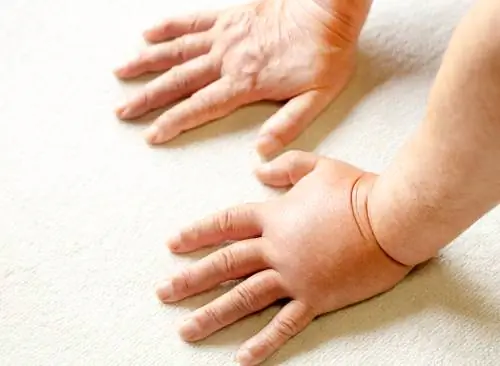
Hornet stings often swell very badly
The pain after a hornet sting is explained by the longer stinger that penetrates deeper into the skin. However, the pain will subside quickly, especially if you cool it as quickly as possible. Clear, fresh water is very suitable for this. Alternatively, you can also apply Fenistilgel (€30.00 on Amazon) or an aloe vera-based cream. If you have an aloe vera plant at home, simply cut a piece of a leaf and open it lengthwise. Then place it on the stitch with the open inside facing down. A visit to the doctor is only necessary if allergic symptoms become noticeable after a sting.
Lifestyle and tasks
The queen and the hornet colony are busy between May and October, with each animal fulfilling its assigned tasks during this time. While the queen diligently lays eggs and ensures hierarchical order, the workers get the food, look after the offspring and guard the nest. The life cycle of hornets follows a strict pattern.
Mating and Reproduction
Towards late summer, more so-called sexual animals hatch, these being the new young queens and the male drones. Depending on the strength of the hornet colony, more or fewer new queens are produced, as most of them mate with only one drone or a few drones anyway. The young queens fly out of the nest in September and initially stock up on supplies for the winter. Only then do they arrive - usually on a sunny autumn morning - for the mating flight with the drones. The young queen then looks for suitable winter quarters as quickly as possible.
Death
The drones, on the other hand, die a few days to weeks after mating. The old queen also expires in October at the latest or is even killed by her workers. Finally - often with the onset of the first frost - the last workers die. This means that the hornet colony is completely wiped out except for the overwintering young queens. Only next year will new colonies emerge from the “offspring”, provided they have survived the winter.
Wintering
The young queens look for suitable winter quarters immediately after mating so that they are not surprised by a cold snap or eaten by an enemy - such as a bird. They prefer the smallest cracks and crevices, for example in walls, but they also dig tunnels in soft, rotten wood or bury themselves in the ground. These winter quarters are often close to the old nest and therefore close to human habitation. Many of the young queens do not survive the winter, freeze to death or fall victim to hungry birds or other predators.
What does the hornet queen eat?
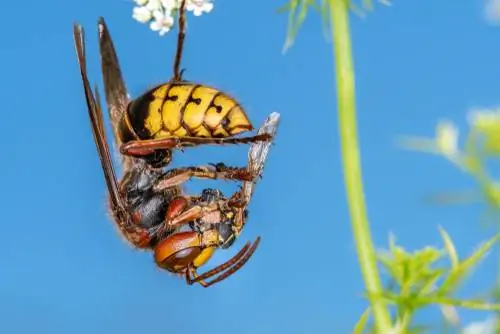
Hornets are omnivores
Hornets are extremely good hunters, and the workers in particular stand out as such. They are the ones who fetch protein-rich food for the larvae and also prey on wasps and other insects for this purpose. The adult hornets, on the other hand - and thus also the hornet queen - feed largely on plant juices and nectars, which is why the animals are often found on sap-rich trees (e.g. lilac, willow, ash or birch) and are particularly fond of sweet fruit. However, unlike wasps, hornets are rarely attracted to human food.
Frequently asked questions
Do the workers also lay eggs?
In the hornet state, the queen alone is responsible for laying eggs. However, the workers are not infertile, but rather have functional ovaries. However, these only in very rare cases actually produce eggs because the workers themselves leave them without any function. Recent research has shown that it is not the queen who uses pheromones to make her workers infertile. If a worker does lay eggs, they are quickly discovered and eaten by the others. Only towards the end of the summer, when the queen is hardly being cared for or is already dead, do hornet workers sometimes lay eggs. However, these can no longer develop properly due to the advanced season.
How long do the drones live?
The male hornets - called drones - have a very short life expectancy of just a few weeks. They hatch towards the end of summer and die immediately after mating with the young queens.
What happens to the hornet colony if the queen dies?
A hornet colony without a queen cannot survive because the workers themselves only have a life expectancy of a maximum of four weeks and the queen is solely responsible for laying eggs. If the queen actually dies before the end of her life - for example due to an infection - the workers will also start laying eggs, but these are infertile (no mating ever took place!) and so only male hornets will hatch. However, these cannot contribute to the survival of the hornet colony.
How big can a colony of hornets get?
A hornet colony is nowhere near as big as a bee colony, but can certainly grow to 600 to 700 individual animals if there is a good supply of food and suitable weather.
Is the carpenter bee also a hornet?
The carpenter bee - due to its similarity to hornets - is also colloquially known as the "black hornet", but is actually a true bee and is therefore not closely related to the giant wasps. The heat-loving insect can grow up to three centimeters long and is therefore the largest bee species found in Germany.
Tip
Hornets are endangered species and are therefore under strict nature conservation. You can do something to preserve this fascinating species by hanging special hornet boxes in the garden. These are often used by the queen to build nests and also have the side effect that the animals do not settle near the house.

